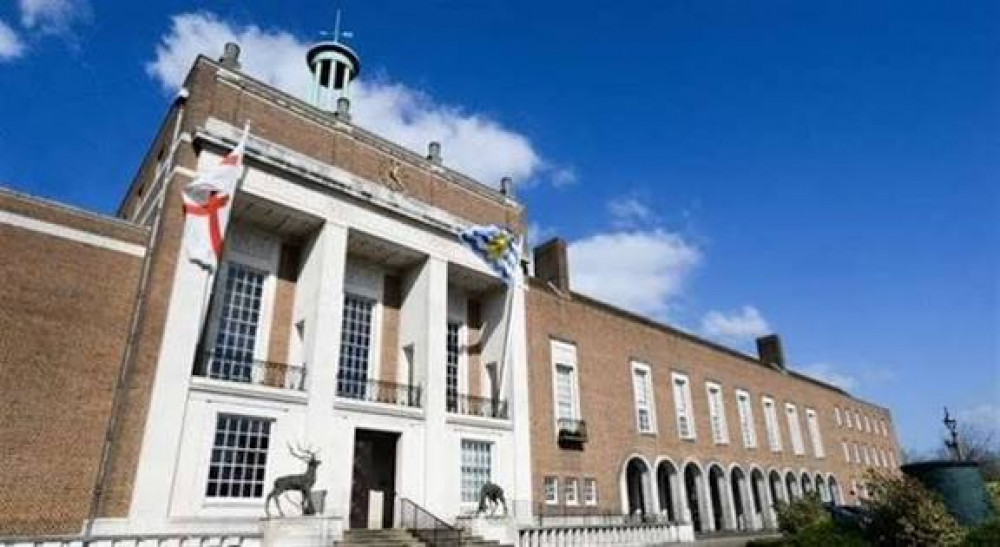Hertfordshire: Councils had borrowed over £1.7 billion by end of 2024-25, data shows
By Deborah Price - Local Democracy Reporter 26th Sep 2025
By Deborah Price - Local Democracy Reporter 26th Sep 2025

Borrowing by councils in Hertfordshire is now in excess of £1.77 billion, according to the latest available data.
By the end of the 2024-25 financial year on March 31, Hertfordshire County Council was borrowing £602 million – which equates to £495 for each of the county's 1.2 million residents.
And the county's 10 district and borough councils had collectively borrowed £1.17bn – up £72.8m on the year before (2023-24).
Councils are allowed to borrow funds in order to invest in projects as schools, leisure centres and theatres, and to invest in property to bring in an income that would exceed the debt repayments.
The data – from information published by the Ministry of Housing, Communities and Local Government (MHCLG) – reveals significant differences in borrowing between Hertfordshire's councils.
Dacorum had the highest borrowed sum among the county's district and borough councils at the end of 2024-25, at £331m – £2,098 per resident.
By contrast, neighbouring Three Rivers District Council had borrowed £8m – £84 per head of population – while Hertsmere Borough Council recorded no borrowing in 2023-24 or 2024-25.
The county council, East Herts Council and Stevenage Borough Council increased their borrowing over the course of last year, according to the data, while Broxbourne, North Herts, St Albans, Watford and Welwyn Hatfield borrowed less.
The four councils to record the highest level of borrowing – Dacorum, St Albans, Stevenage and Welwyn Hatfield – all point to their investment in social housing as accounting for the bulk of the money.
Officials at the county council – whose borrowing increased by 24.7%, from £487m to £602m – say it is fully factored into the authority's budget plans. And despite the significant interest payments, it will save money in the longer term.
"The county council, like all local authorities, is only allowed to borrow money to invest in infrastructure and service improvements – we cannot borrow money to cover our day-to-day running costs," said a spokesperson for HCC.
"We borrow money to fund our capital programme, which includes building and expanding important facilities like care homes and SEND schools, as well as investment in our highways network.
"Investing now in things like care homes for children we look after will save us money in the long run and help improve our financial position."
In Dacorum, borrowing of £331m at the end of 2024-25 was £3.9m (1.2%) lower than 12 months earlier but was "not a burden for council tax payers".
A spokesperson for the borough council said: "The vast majority of this (£325m) relates to the council's Housing Revenue Account (HRA), the self-financing housing provision supported by an asset base of more than 10,000 homes, with a balance sheet value exceeding £1 billion.
"This debt is ring-fenced to the HRA and is not a liability of the General Fund, meaning it is not a burden for local council taxpayers. The council's General Fund debt stands at £5.7m, which is among the lowest per head of population in the country."
A spokesperson for Hertsmere Borough Council – which has not borrowed a single penny over the last two complete financial years – said that it had financed its "borrowing need through its own cash flow".
Stevenage Borough Council has the second highest level of borrowing among Hertfordshire's district and borough councils. It increased by £13m over the course of 2024-25 to £247.9m, the equivalent of £2,750 per resident.
A spokesperson said: "In 2012, Government policy changed, allowing local councils to keep all their housing rent income rather than paying it into a central pool. This meant it was available to fund local housing services and invest in housing stock.
"However, this involved paying the Treasury a significant amount of money as determined by the Government. Stevenage Borough Council had to pay the Treasury £199m, and the stock-owning councils in Hertfordshire [Dacorum, St Albans, Stevenage and Welwyn Hatfield] paid £1 billion to the Treasury in total.
"This forms most of the council's total debt. The council has a 30-year business plan which shows how we will invest in our housing stock and still be able to afford the level of HRA (Housing Revenue Account) debt.
"The remaining amount of council borrowing has been for a specific purpose either backed by increased revenue, such as investment in our garages or for regeneration purposes, and the General Fund reports demonstrate the council's ability to pay and refund that debt."
Welwyn Hatfield Council was recorded as having borrowed £241.5m at the end of 2024-25, down £4.4m (1.82%) in a year to £1,984 per resident.
According to council officials, 90% of the sum relates to investment in housing stock and the remaining 10% supports services such as the authority's leisure facilities.
"The council's borrowing is carefully managed and remains within sustainable levels," said a spokesperson. "Any new borrowing is considered carefully and undertaken only within the limits set out in our annual strategies, ensuring it remains affordable.
"Of the £241.5m owed at the end of 2024-25, £217.8m relates to the council's housing stock. This debt was largely taken on in 2012 following a change to Government policy, which shifted housing debt to councils, and it also includes borrowing associated with the building of new council homes.
"This housing-related borrowing is managed directly through tenant rents, not through council tax or other council services, and has been structured to remain affordable over the long term.
"The remaining £23.7m of borrowing supports other council services, including regeneration, the council's crematorium and leisure facilities.
"All borrowing is in line with the council's Treasury Management Strategy and is regularly reviewed to ensure it remains affordable and sustainable. It reflects long-term investment in housing and local services to meet community needs while maintaining careful financial management."
St Albans City and District Council ranks fourth highest with borrowing at £202.8m at the end of 2024-25. That was down by £30.2m (12.97%) on 2023-24 and equates to £1,363 per resident.
According to Robin Taylor, strategic director for customer, business and corporate support, the council has "discontinued" a number of investments since 2023 in the wake of the Covid pandemic, the war in Ukraine, escalating inflation and rising costs.
The bulk of the borrowing relates to housing, with other debt linked to the reconstruction of leisure centres and income-generating initiatives.
Mr Taylor said: "[…] investment in social housing continues to be a strategic priority for the council, and debt levels in this area may rise accordingly.
"It is anticipated that rental income generated from these developments will support their long-term financial sustainability."
Of St Albans' £202.8m debt as of March 31 this year, £145.2m relates to the ring-fenced Housing Revenue Account and arises from the Government's introduction of 'housing self-finance' in 2012, a framework under which local housing authorities manage their finances independently of central government subsidies.
Mr Taylor said: "The associated debt has steadily declined since its peak of £176 million in 2012, with ongoing plans to further reduce this liability over time.
"General Fund (non-social housing) debt pertains to capital expenditure on projects such as reconstruction of leisure centres and income-generating initiatives including Jubilee Square, which has transformed a previously run-down area of St Albans city centre."
East Herts Council had borrowed £64.5m at the end of 2024-25 – £14.5m (29%) more than 12 months previously and equivalent to £420 per resident.
Borrowing has increased in order to support building projects that include Northgate End multi-storey car park and Grange Paddocks Leisure Centre in Bishop's Stortford.
But officials say debt remains "at a sustainable level" and the council "continues to balance its books and maintains reserves to manage financial risks".
A spokesperson said: "As outlined in our draft statement of accounts for 2024-25, the council's borrowing has increased primarily to support long-term capital investment projects that deliver lasting benefits to our communities. This includes improving our car parks, leisure and arts provision.
"The council's debt remains at a sustainable level, backed by careful financial planning and a strong Treasury Management Strategy.
"Borrowing is undertaken within the parameters of the CIPFA Prudential Code and is regularly reviewed to ensure affordability and value for money.
"Despite reduced financial support from central government and significant cost increases in delivering services, the council continues to balance its books and maintains reserves to manage financial risks."
Broxbourne Borough Council recorded borrowing of £51.6m in 2024-25 – £6m (10.41%) lower than the previous year. This equates to £516 for every one of its residents.
A spokesperson said: "In the past the council has borrowed exclusively for the purchase of commercial properties which generate an income stream that can be used to support the delivery of council services.
"This approach was taken in response to the significant decline in funding from central government to ensure services did not need to be cut.
"Each investment was carefully considered and subject to a full business case appraisal before it was agreed.
"The rental income received from the properties has covered the costs of financing the borrowing as well as supporting the delivery of services."
Watford Borough Council more than halved its borrowing from £47m at the end of 2023-24 to £22.5m at the end of March this year.
Neighbouring Three Rivers District Council's borrowing remained constant at £8m – equivalent to £84 per resident.
A spokesperson said: "The council is allowed to borrow to support its capital expenditure as long as this is prudent, sustainable and affordable."
In North Herts borrowing fell by £22,000 to £325,000 – equivalent to just £2.40 per resident.
But the district council's executive member for resources, Cllr Ian Albert, says he expects it to increase in the future.
"North Herts Council currently only has a small amount of historic borrowing, which we are paying off as it becomes due," he said.
"Like all councils, we can only borrow to fund capital investment or for cashflow purposes.
"In recent years our capital projects – such as buying and improving local assets – have been funded from the proceeds of surplus land sales and the housing stock transfer.
"Those funds have now been fully utilised, so future capital investment will need to be supported through borrowing.
"In the short term we will borrow against our cash balances, but over time our external borrowing levels will increase as we continue to invest in local facilities."
The borrowing data, compiled by the Local Democracy Reporting Service, comprises debt data for Q4 2024-25 published by the Ministry of Housing, Communities and Local Government (MHCLG).
It includes short-term and long-term borrowing from a range of lenders that includes banks, building societies, public and private corporations, Government and the Public Works Loan Board.
At the end of March 2025, UK councils had borrowed in excess of £122 billion – including £96bn by councils in England.
The debt per person across the UK is equivalent to £1,791 – £1,668 in England.
Over 2024-25, the borrowing amassed by councils in England increased by £5.4bn – equivalent to £95 per person.
CHECK OUT OUR Jobs Section HERE!
hitchin vacancies updated hourly!
Click here to see more: hitchin jobs
Share:












